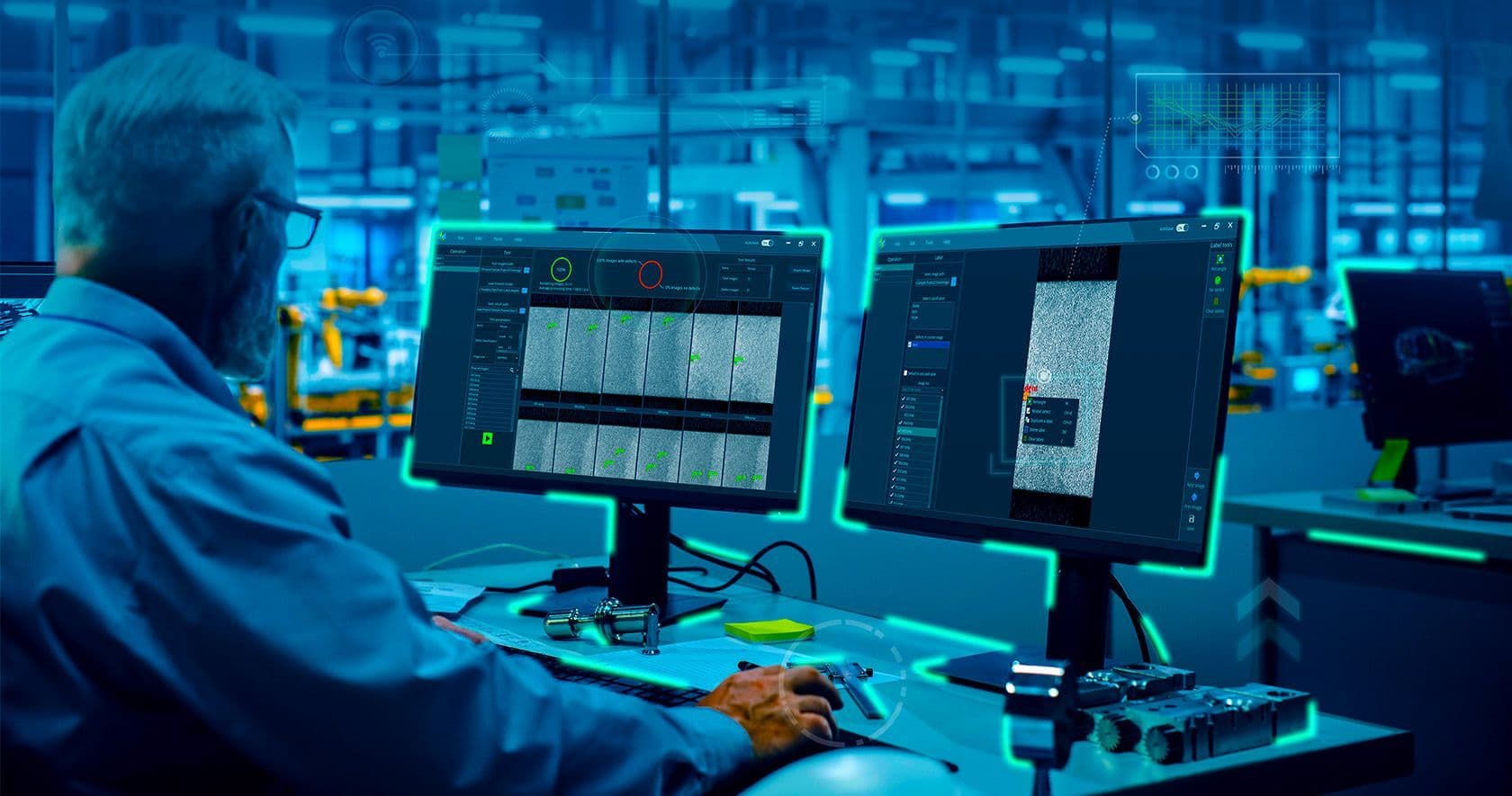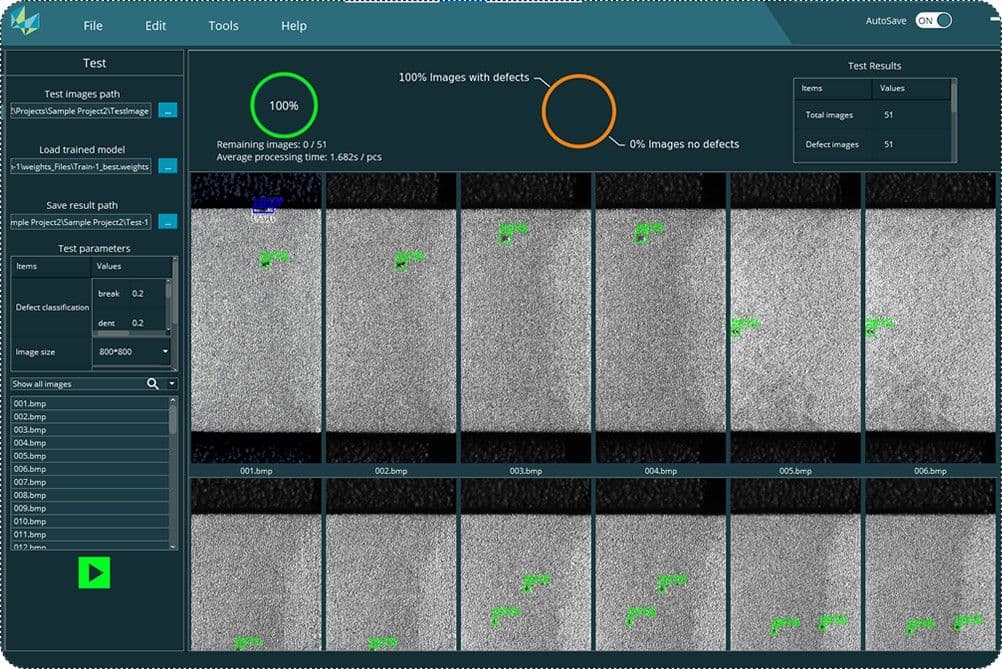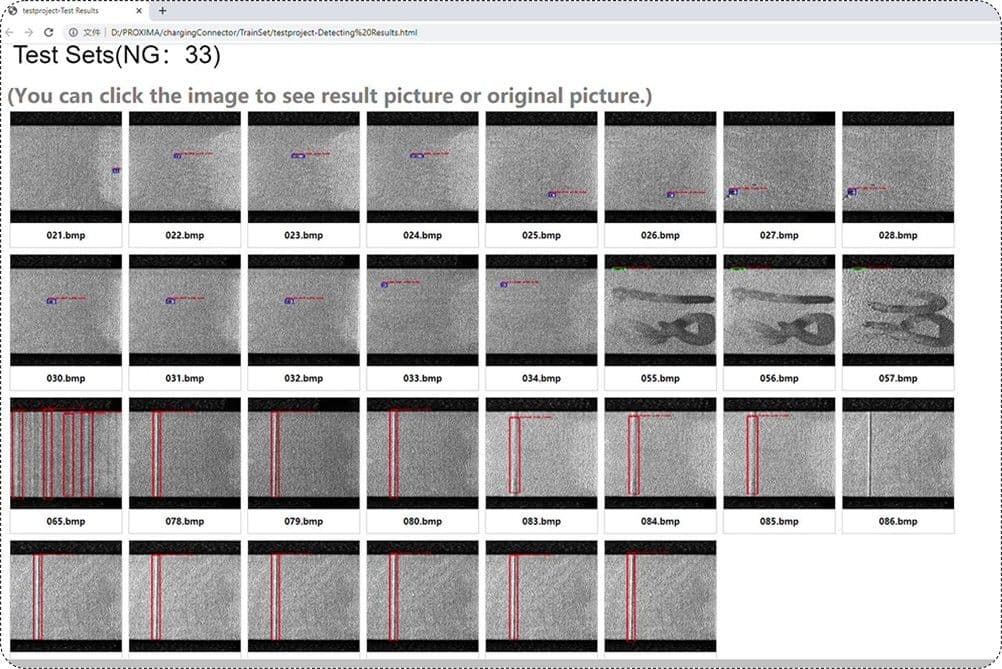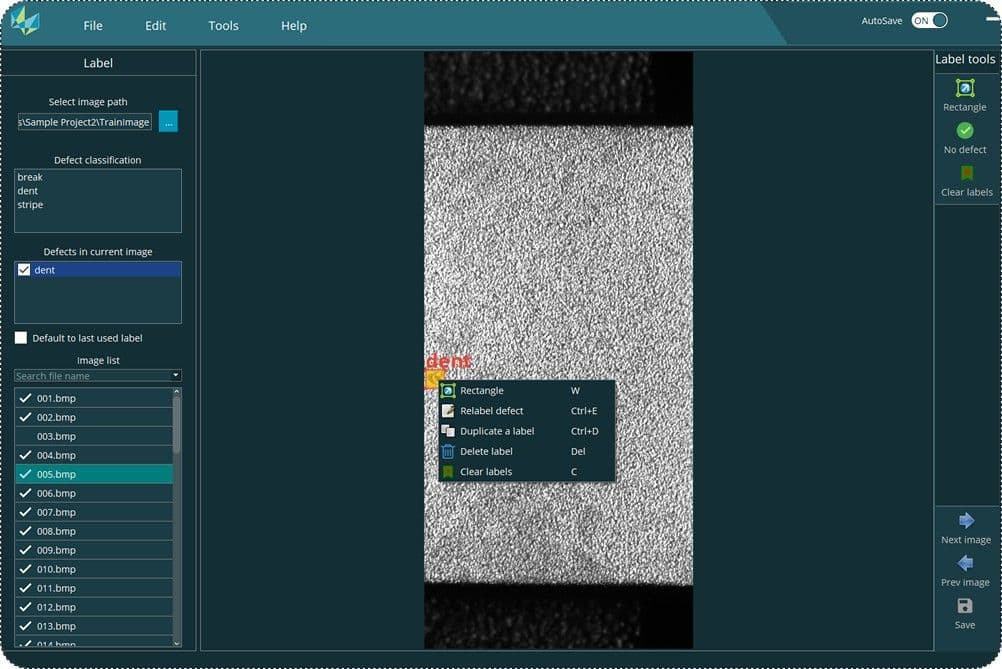© 2025 Hexagon AB and/or its subsidiaries
© 2025 Hexagon AB and/or its subsidiaries

Identify surface defects on materials such as glass, metal, plastics, ceramics and textiles.
Automated surface inspection application ideal for defect detection
HxGN Visual Detection can be deployed to support a wide range of use cases. It can manage high-speed throughput within a large manufacturing cell or when checking small numbers of high-value components during a proof of concept. HxGN Visual Detection uses CNN (convolutional neural network) deep learning models to train, identify and categorize surface defects.
Ready for use with Hexagon’s Optiv vision CMMs, HxGN Visual Detection can easily be incorporated into metrology workflows with PC-DMIS Vision to add surface inspection. The fully automated, one-shot measurement and defect detection approach will increase autonomy and accuracy and improve efficiency in any workflow.
Benefits And Features
Automate quality inspection and detect defects faster

AI powered speed and flexibility
Hexagon Visual Detection uses AI to learn from a set of training images, so it can be quickly trained to recognise defects and reconfigured to support a range of products

Improve quality
Locate defects across a wide range of materials such as glass, metal, plastics, ceramics and textiles with an excellent level of accuracy. Reduce rework, limit quality-related downtime and minimise project costs

Simple to use
Intuitive and easy to use. Quickly train Hexagon Visual Detection to identify production defects by drawing rectangles around scratches or dents in your sample image set.
Training and Resources
Connect and collaborate with your peers and experts
The Nexus Community provides you with excellent peer forums and the opportunity to learn from thousands of others in your industry. Currently, hundreds of peer forums waiting for you to explore into. Discover best practices and get the answers you need to succeed. Register for Nexus to get full access the Community forums.
Our team is ready to help
Our technical support teams are on hand to answer your questions. Contact us through our online form and we will get right back to you.
You might be interested in...

Identify surface defects on materials such as glass, metal, plastics, ceramics and textiles.
Automated surface inspection application ideal for defect detection
HxGN Visual Detection can be deployed to support a wide range of use cases. It can manage high-speed throughput within a large manufacturing cell or when checking small numbers of high-value components during a proof of concept. HxGN Visual Detection uses CNN (convolutional neural network) deep learning models to train, identify and categorize surface defects.
Ready for use with Hexagon’s Optiv vision CMMs, HxGN Visual Detection can easily be incorporated into metrology workflows with PC-DMIS Vision to add surface inspection. The fully automated, one-shot measurement and defect detection approach will increase autonomy and accuracy and improve efficiency in any workflow.
Take advantage of various learning opportunities
Visit the Nexus Academy Catalog for a complete list of educational content. You can enroll for training, complete self-paced courses, register for distance learning, classroom instruction, live training events, and download or print your completion certificate.

Dive into our documentation to explore the full potential of our product offerings
Your ultimate resource for practical guidance and support. Here you’ll find a wealth of step-by-step how-to guides, detailed tutorials, and handy tips and tricks. Whether you’re troubleshooting an issue or looking for ways to optimize your use of our products, our Documentation Center provides clear and concise information to help you get the most out of your experience.

Downloads are only available on the desktop version. Please access our site from a desktop to download.
Get the most out of our resources.
For the latest updates, resources, and software, please visit our Download Center
Click the link to access the files you need today